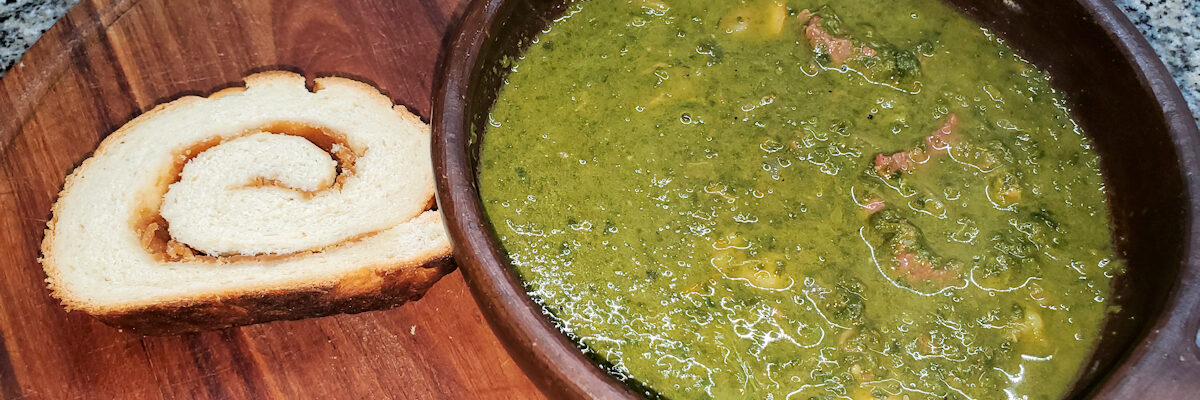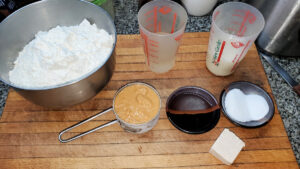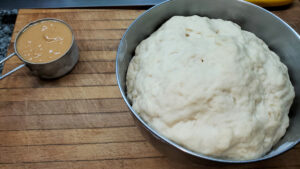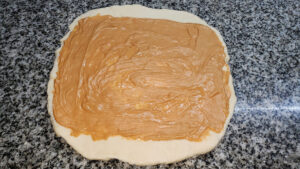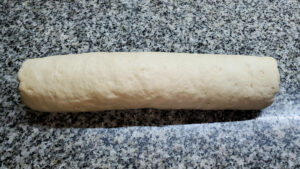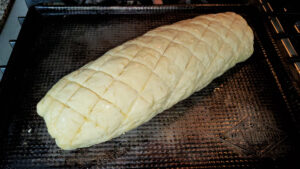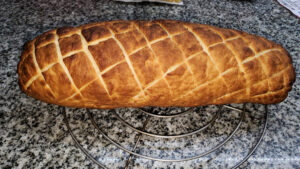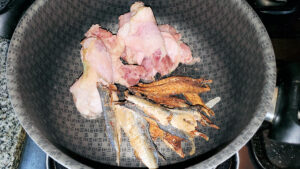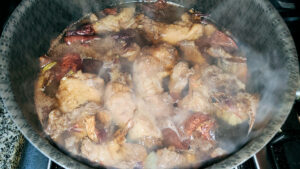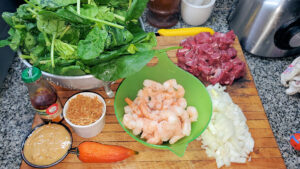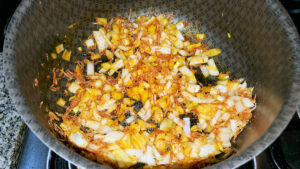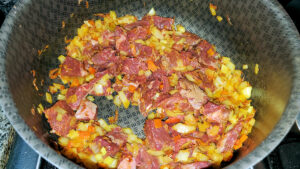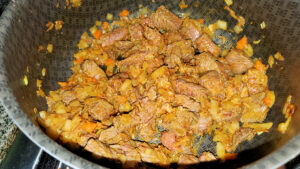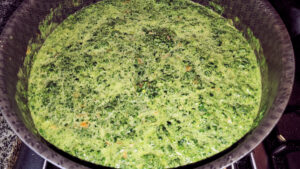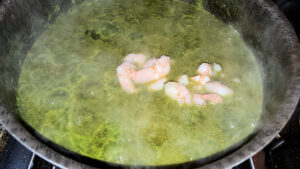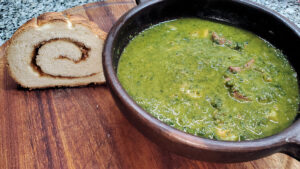We’re finally into the Ds! I guess this could have been one of the Cs, since there are two Congos, the Republic of the Congo and this one, the Democratic Republic of the Congo, but I listed them in my little spreadsheet under their full names, so it’s just how it worked out. This one also has multiple names, Congo-Kinshasa, DR Congo, the DROC, the DRC, or simply either Congo or the Congo.

When I was a kid, it was called by the same name as it is now, though it went through a brief, six year or so period in my teens when it was called Zaire (and had a much cooler flag). As a declared country its history stretches back to the 14th century, when the Kingdom of Kongo was established, and remained so until a Belgian invasion in 1870, establishing Belgian Congo, which it remained until it declared independence in 1960.
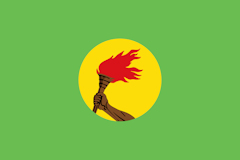
Officially, the language of the country is French, with four recognized “tribal” languages, Kikongo, Lingala, Swahili, and Tshiluba. It’s interesting given the short colonial period of only 90 years that the indigenous languages aren’t given more prominence, and that the colonial language took over so dominantly. I guess given that there are actually several hundred local languages and dialects among the multi-ethnic population, French is sort of the bridge language. The original population of the core region were a group of hunter-gatherer pygmies, the Mbuti, of whom, about 600,000 remain.
At a little over 900,000 square miles, the country is about the size of Alaska and Texas combined, with a population of around 105 million, or a bit over five times the population of those states combined (okay, Alaska isn’t exactly the most populous state around). The vast majority, 95%, identify as Christian, about 56% being Roman Catholic, and the rest “various other” Christian sects. The capital of Kinshasa is home to about 17 million, or about a sixth of the population. While the official urban area is only about 200 square miles, the “metropolitan” area comes in at almost 4000 square miles.
The food is heavily based on subsistence farming and gathering. Meals tend towards heavy on starch, often cassava root (yuca), sweet potato, yam, taro, plantain, or pumpkin, accompanied by a vegetable and/or meat stew. For our project here, my first impulse was to go with what’s sort of considered the national bread, kwanga, but it’s basically just cassava starch and water wrapped in a leaf and steamed, and I wanted something more interesting, challenging…, flavorful? I found several references to Pain Mwambe, which seemed to be, from description, a colonial era bread flavored with peanut butter. Now, bizarrely, I couldn’t find a single online photo of it, and only found one recipe, clearly from a colonial era cookbook of some sort, and being in English, no doubt, let’s call it, an “interpretation”. It wasn’t at all what I expected, and it was really poorly written, but I took the basic idea of it and made something which probably isn’t remotely traditional, but so be it. For the soup, I went with Pondu, in a way similar to the recent pureed greens soup I made for the Central African Republic, but different enough that I thought it worth making.
Let’s start with the bread….
We have bread flour, warm water, scalded milk, peanut butter, vegetable oil, sugar and salt, and yeast. Proof the yeast in the warm milk, dissolve the sugar and salt in the warm water, then mix everything but the peanut butter into the flour. I have to admit, I kind of thought the peanut butter would be a part of the structure of the bread, kind of as the fat element, just based on descriptions, but then, maybe being a colonial thing, it was “fancied up” in a more European style bread.
Cover the dough and let it rise until doubled.
Roll it out into a square and cover with the peanut butter. Now, here’s where, for example, the written recipe was clearly just wrong. It specified rolling it out to a six inch square, and then after what we’re about to do, rolling it up into a coil, then tying that coil into a knot. Not remotely possible with a six inch square. It wasn’t even possible with a twelve inch square – you’d have to roll this out a lot longer in one direction to do that.
So, rolled up, and sealed the edge as best I could. Not tied into a knot, it would have had to be thinner and longer to do that. Cover and let rise again until it’s doubled in size.
Then slash it in a crosshatch pattern and brush with melted butter. This is feeling very European.
And, bake in a hot oven. Again, weird directions, which specified a temperature of 400-450F, about as hot as anyone’s home oven goes, and baking it for a minimum of 45 minutes. You’d end up with a basically burnt loaf of bread if you did that. As it was, at that temperature, this is how it came out at 30 minutes, and the bottom was already starting to char.
On to our soup!
First was making a relatively quick stock. Into a pot with some dried, smoked fish, and either chicken or beef bones, in this case, I had some chicken necks in the freezer stashed away for just this sort of thing. Although not specified as any more than that in the broth, I figured I’d use the scraps from cutting up everything else in the next step just to give it more flavor, so there’s also the scraps of onion, and the trimmings of the beef. Bring to a boil, reduce heat, and simmer half an hour, then strain.
We have spinach (traditionally, cassava leaves, but I can’t get those, and several recipes recommended spinach as a substitute), diced beef, chopped onion, some shrimp (I couldn’t find raw, fresh shrimp in the market, so these are parcooked and peeled), dried shrimp, dende (palm) oil, peanut butter, and a hot chili. Classically it would be something really fiery like a scotch bonnet or habanero type chili, but this was what I could find – in the end, I added about a 1/8 teaspoon of habanero chili powder to the pot too.
Sauté the onion and dried shrimp in the dende oil for about five minutes. A little salt at the same time.
Add the beef and the chopped chili and cook until browned.
Add the peanut butter and cook just to toast the flavor a little, about two minutes. Add some salt and pepper too, just a bit, we’ll adjust it later.
Puree the spinach in the stock that you made – given the quantity, it took two batches to do it. Add to the pot. Bring to a simmer and cook for 25 minutes.
Add the shrimp and cook another five minutes to heat them through. Adjust seasoning with more salt and pepper to your tastes. If it’s not spicy enough, as mine wasn’t, this was the point I added in the little bit of chili powder during the last five minutes of cooking.
And, serve. Okay. Honestly, I kind of hated the bread. It’s a somewhat insipid white bread with a layer of baked peanut butter in it, which makes the peanut butter get kind of dry. It’s also kind of crumbly. I did use a couple of slices as the bread for a guberburger. I’ll leave you to look that one up. Not a bread I’d make again. The soup on the other hand, absolutely delicious. Really complex, and thick, fittingly, since it’s generally served more like a stew, and often even ladled over something starchy. In fact, tried it over rice and it really works that way. Certainly one of the better and more interesting spinach soups I’ve ever had.
Next time, it’s off to Denmark.
